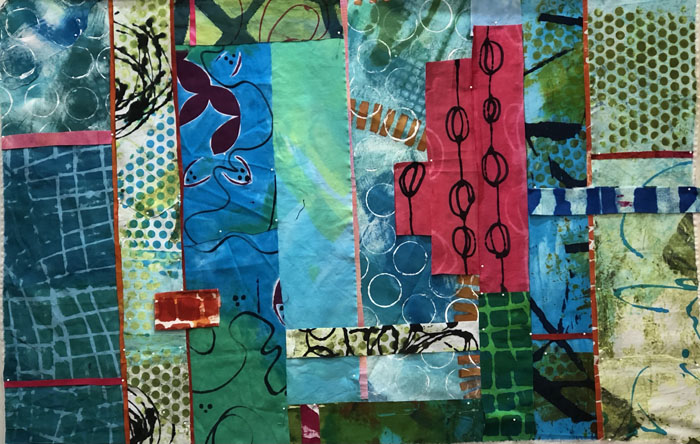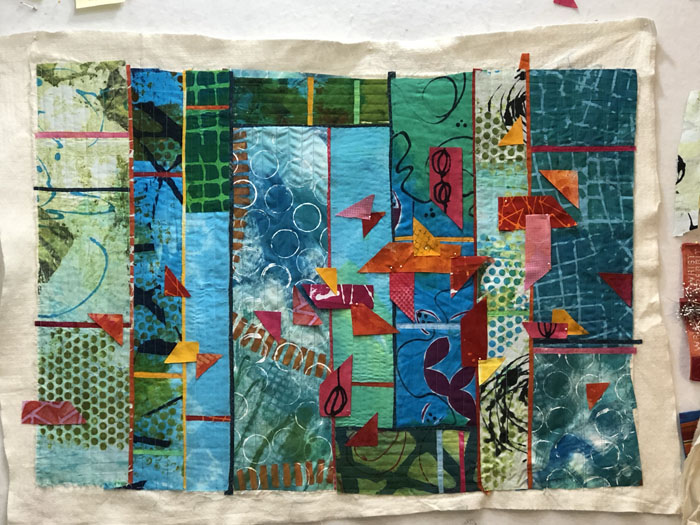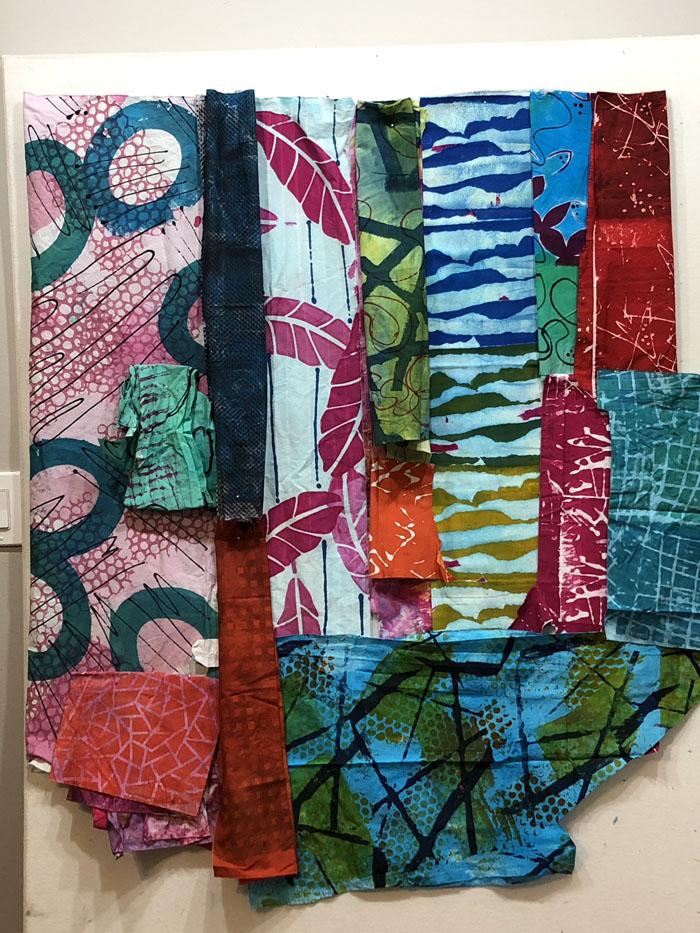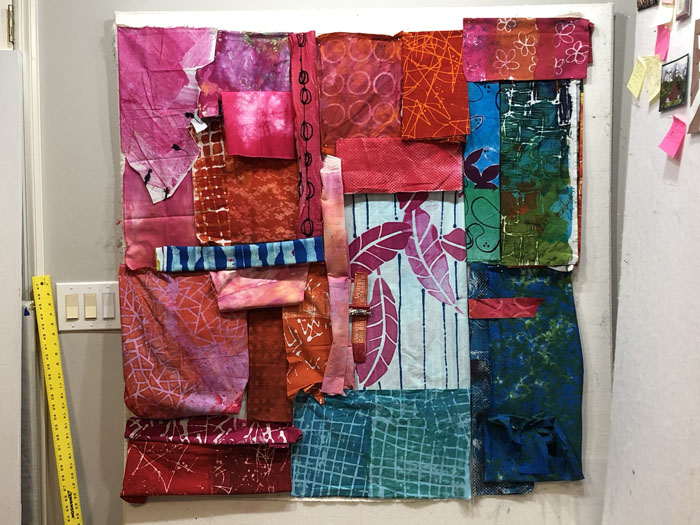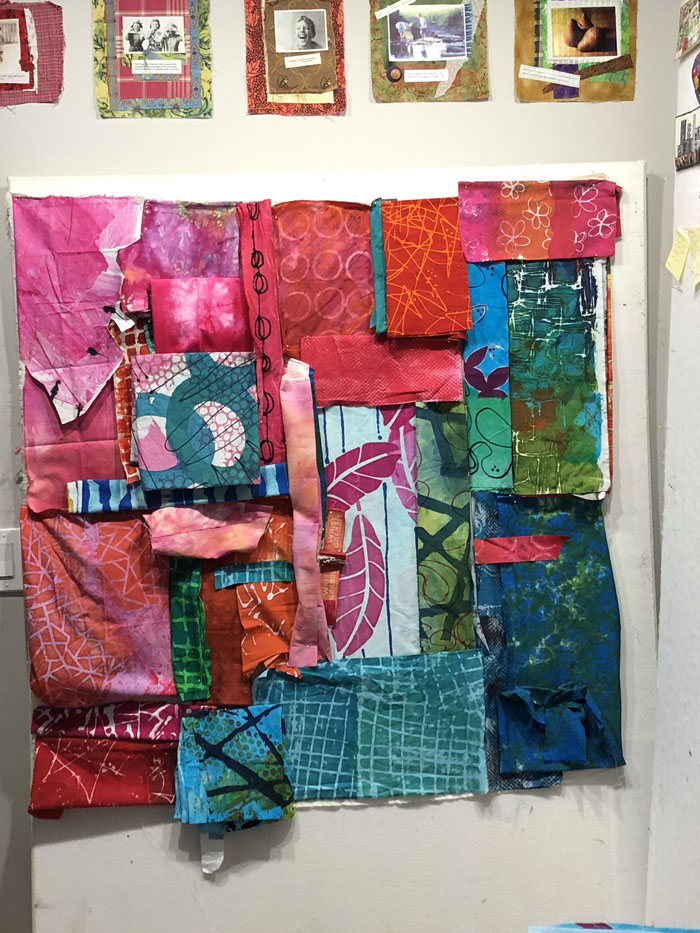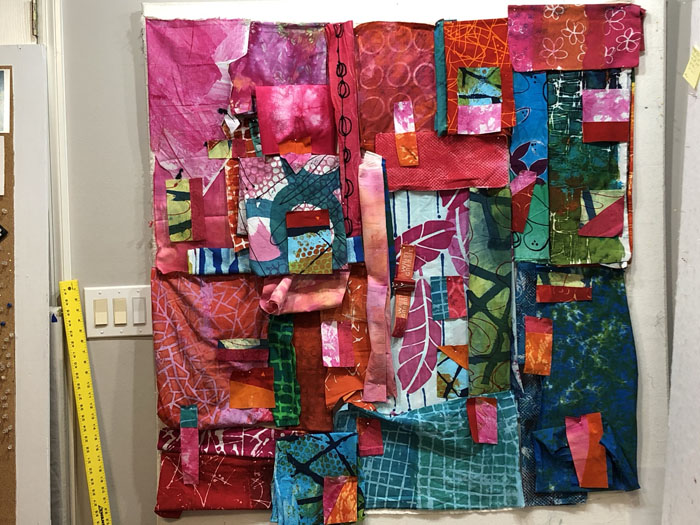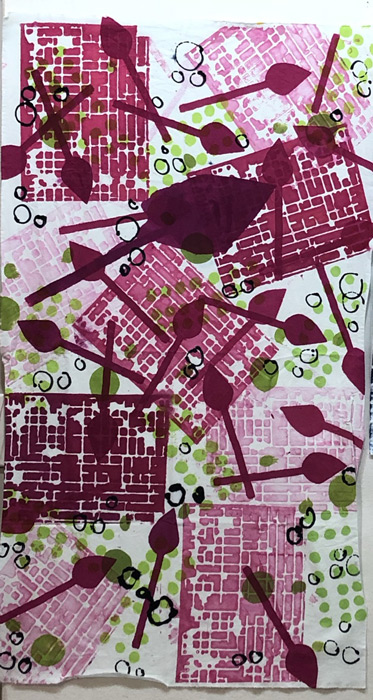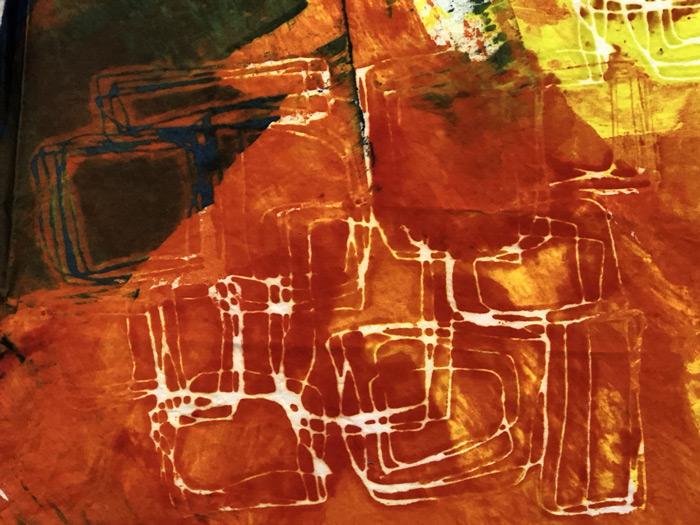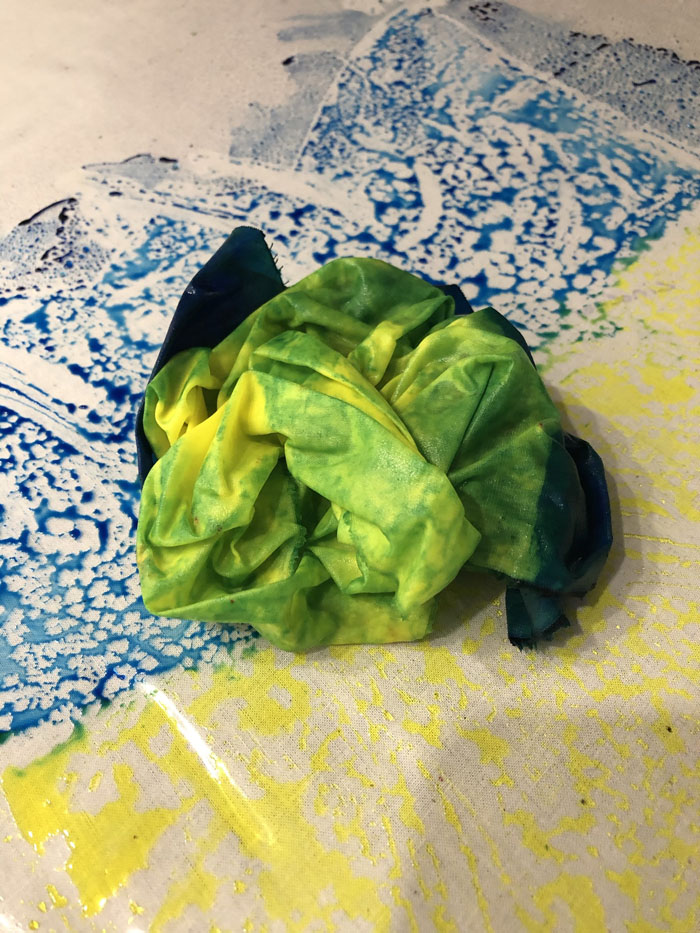After a disappointing attempt at making a quilt featuring my large-scaled hand dyed fabrics, I dramatically down sized and tried again.
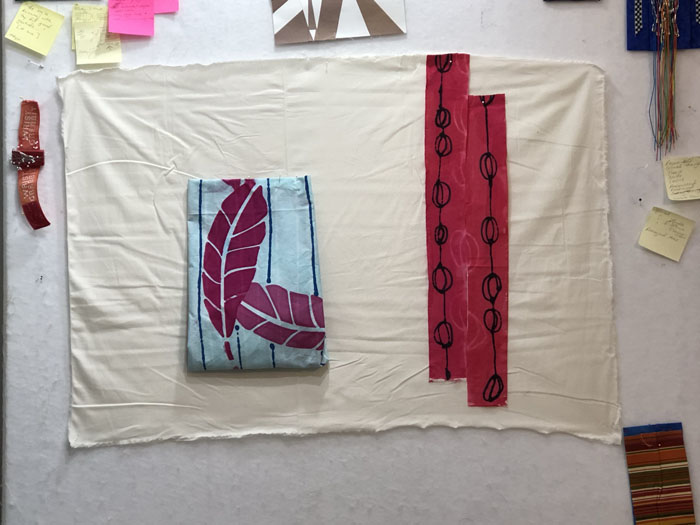
This time I switched the color proportions, using turquoise as my primary color and fuchsia as the accent. I still found it hard to incorporate the leaf fabric. Maybe because it had a lighter background? As you can see, I quickly over worked it.
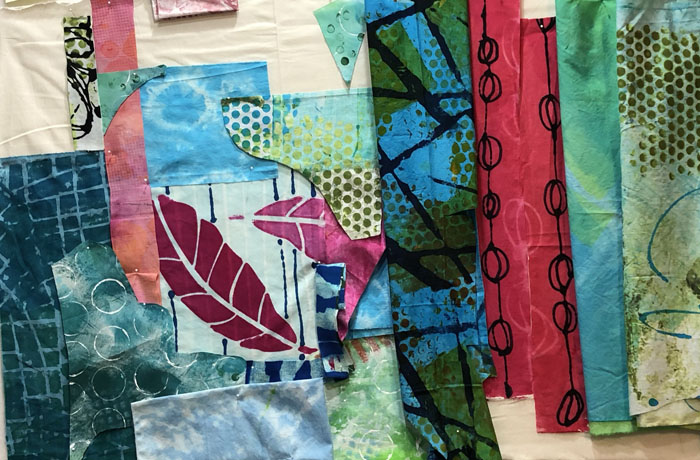
Have you heard the saying, “If something’s not working out (visually) remove your favorite thing?” Yeah. I slowly considered that I might need to remove the fuchsia leaf fabric and eventually did so, (reluctantly.) And, of course, things got much easier after that.
The background progressed well and I was very happy with it. It even showed off my fabrics, right?

On to a focal point. And I had the perfect specialty fabric for it.
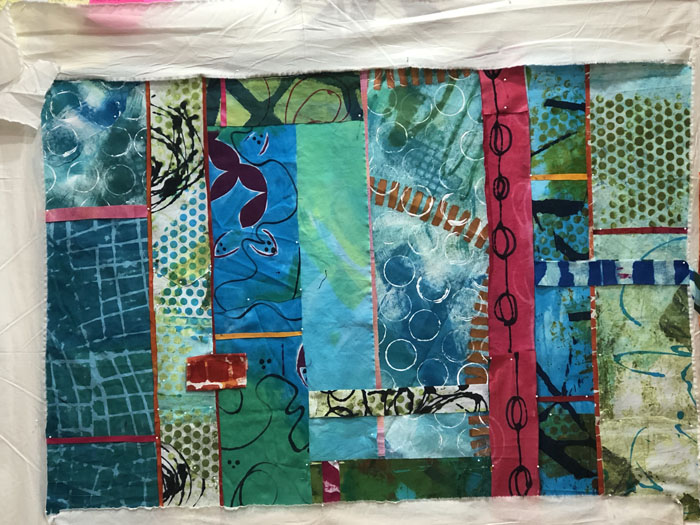
But one strip of perfect fabric clearly couldn’t carry the whole piece. I knew I’d have to cut it into pieces to add some energy and to improve the composition.
BTW, I’m calling this “The robbing Peter to Pay Paul photo.” It shows what’s left of the original composition on the left design wall, as I reworked it on the right, using many of the previously cut fabrics.
OK, so I needed to mix things up a little. I decided to expand the color palette and to add additional smallish pieces. A quick audition confirmed this as the correct direction. Didn’t it gain a lot of energy from that?
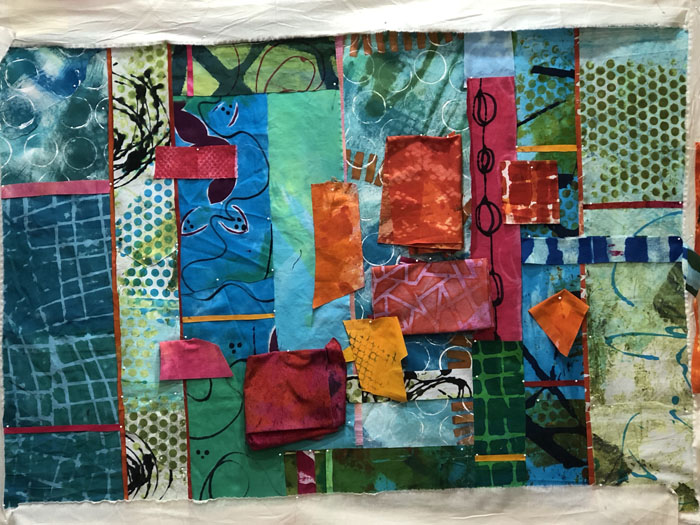
I committed to cutting smaller shapes and I was really liking where this was going.

I was getting close. After finalizing the arrangement, I took lots of photos of the accent pieces and lifted them all off. Then I quilted the background with straight lines. At one point I put the background back on the design wall, but accidentally got it upside down (below.) I decided I liked that better.
Here’s the final arrangement pinned, and ready for gluing, then stitching/quilting.
I’ve had quite a time thinking of a name. Any suggestions? I’m leaning toward Underwater Dance, Shallow Water Dance, or just Water Dance. Do you think any of those work?
Ellen Lindner
P.S. Don’t you love my new lights on my design walls? I LOVE them!!! (See more of my recent studio revamp on my video page.)

